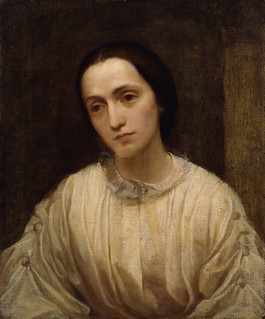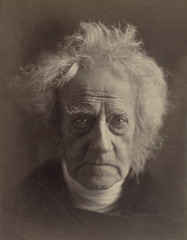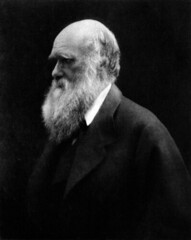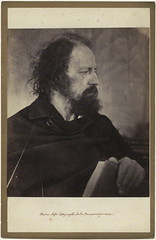Julia Margaret Cameron (11 June 1815 - 26 January 1879) was born as Julia Margaret Pattle in Calcutta, India. She grew up in France and then returned to India. She married the advocate Charles Hay Cameron in 1838. In 1860 they settled over to the Freshwater Bay of the Isle of Wight. In 1864 she began to make photographic likenesses, using the wet-collodion process. She was inspired by artists like painter George Watts and photographer Oscar Gustav Rejlander. Her idea was to achieve only a sharp area in the image, and not the old-school all-sharp image type - and at a time when exposure times could be quite short, often used unnecessarily long exposures resulting in softer images. In the first years she prefered to make portraits, using a 9×11" camera. She made likenesses of poets like Alfred Tennyson and Henry Taylor, and portraits of famous scientists like John Herschel and Charles Darwin. Many of these subjects were well known to her. Later she switched to a larger 11×15" camera and began to make many scenic images in the style of the Pre-Raphaelite Brotherhood. Cameron's images are typical samples of Victorian age photo artistry. In 1875 she and her husband settled over to another island: Ceylon. There she made portraits of local people, until her death in 1879.
(Source: Wilfried Baatz: "Photographen", Hildesheim 2003)
Links



